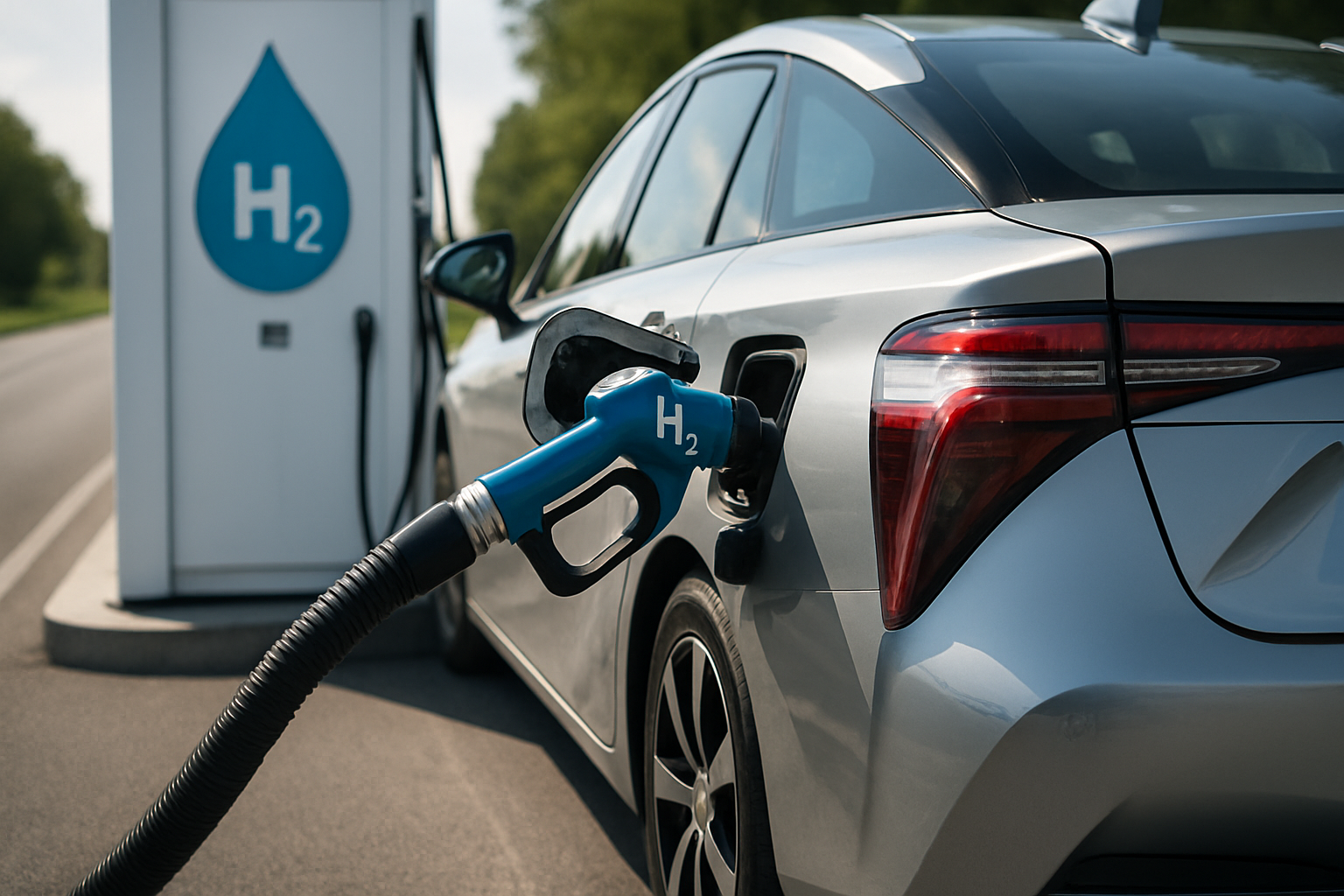Hydrogen Fuel Cell Vehicles: The Next Frontier in Clean Transportation
Imagine cruising down the highway in a vehicle that emits nothing but water vapor, refuels in minutes, and offers a range rivaling traditional gasoline-powered cars. This isn't science fiction – it's the promise of hydrogen fuel cell vehicles (FCVs). As the automotive industry races to develop sustainable transportation solutions, FCVs are emerging as a compelling alternative to battery-electric vehicles, offering unique advantages in range, refueling time, and environmental impact.

Infrastructure Challenges and Solutions
One of the primary hurdles facing widespread adoption of hydrogen fuel cell vehicles is the lack of refueling infrastructure. Unlike electric charging stations, which can be installed relatively easily in homes and public spaces, hydrogen fueling stations require specialized equipment and safety measures. However, several countries and regions are making significant strides in building out hydrogen infrastructure. California, for instance, has committed to having 200 hydrogen fueling stations operational by 2025, while Japan aims to have 900 stations by 2030.
Advantages Over Battery Electric Vehicles
Hydrogen fuel cell vehicles offer several key advantages over their battery-electric counterparts. First and foremost is refueling time – while even the fastest electric vehicle chargers require at least 20-30 minutes for a substantial charge, hydrogen vehicles can be refueled in 3-5 minutes, much like a conventional gasoline car. Additionally, FCVs typically offer greater range than battery-electric vehicles, with some models capable of traveling over 400 miles on a single tank of hydrogen.
Environmental Impact and Sustainability
While hydrogen fuel cell vehicles themselves produce zero emissions, the environmental impact of hydrogen production is a critical consideration. Currently, most hydrogen is produced through steam methane reforming, a process that relies on natural gas and produces significant carbon dioxide emissions. However, the industry is rapidly moving towards more sustainable production methods, such as electrolysis powered by renewable energy sources. This green hydrogen has the potential to make FCVs a truly zero-emission option from well to wheel.
Current Market Players and Future Outlook
Several major automakers have invested heavily in hydrogen fuel cell technology, with Toyota, Hyundai, and Honda leading the charge. Toyota’s Mirai and Hyundai’s Nexo are already on the market, showcasing the viability of fuel cell technology in passenger vehicles. Looking ahead, the potential for hydrogen power extends beyond personal transportation – heavy-duty trucks, buses, and even trains are being developed with fuel cell technology, promising to revolutionize long-distance and high-load transportation.
Overcoming Public Perception and Safety Concerns
Despite the promise of hydrogen fuel cell technology, public perception remains a significant hurdle. Many people associate hydrogen with the Hindenburg disaster or view it as an unstable, dangerous fuel. However, modern hydrogen storage systems are designed with multiple safety features, including robust tanks that can withstand extreme conditions. Educating the public about the safety and benefits of hydrogen technology will be crucial for widespread adoption.
The Role of Government Policy and Incentives
Government support plays a vital role in the development and adoption of hydrogen fuel cell vehicles. Countries like Japan, South Korea, and Germany have implemented comprehensive hydrogen strategies, offering incentives for both vehicle purchases and infrastructure development. In the United States, California has been at the forefront of hydrogen promotion, with generous rebates for fuel cell vehicle buyers and support for fueling station construction. As more governments recognize the potential of hydrogen in achieving climate goals, we can expect to see increased policy support worldwide.
Innovations in Hydrogen Storage and Distribution
Advancements in hydrogen storage technology are crucial for the widespread adoption of fuel cell vehicles. Current high-pressure storage tanks are effective but expensive and heavy. Researchers are exploring alternative storage methods, such as metal hydrides and liquid organic hydrogen carriers, which could potentially increase storage capacity and reduce costs. On the distribution front, companies are developing innovative solutions like mobile hydrogen refueling stations and on-site electrolysis systems, which could help bridge the gap until a comprehensive fueling network is established.
The Synergy Between Hydrogen and Renewable Energy
One of the most exciting aspects of hydrogen fuel cell technology is its potential synergy with renewable energy sources. Excess electricity generated by wind or solar farms during off-peak hours can be used to produce hydrogen through electrolysis, effectively storing that energy for later use. This not only provides a solution to the intermittency issues of renewable energy but also creates a closed-loop, zero-emission energy cycle. As renewable energy capacity continues to grow, this symbiotic relationship could play a crucial role in our transition to a sustainable energy future.
In conclusion, hydrogen fuel cell vehicles represent a promising frontier in clean transportation. While challenges remain, particularly in terms of infrastructure and production sustainability, the unique advantages of FCVs make them a technology worth watching. As advancements continue and support grows, we may soon see hydrogen-powered vehicles playing a significant role in our journey towards a more sustainable automotive landscape.





